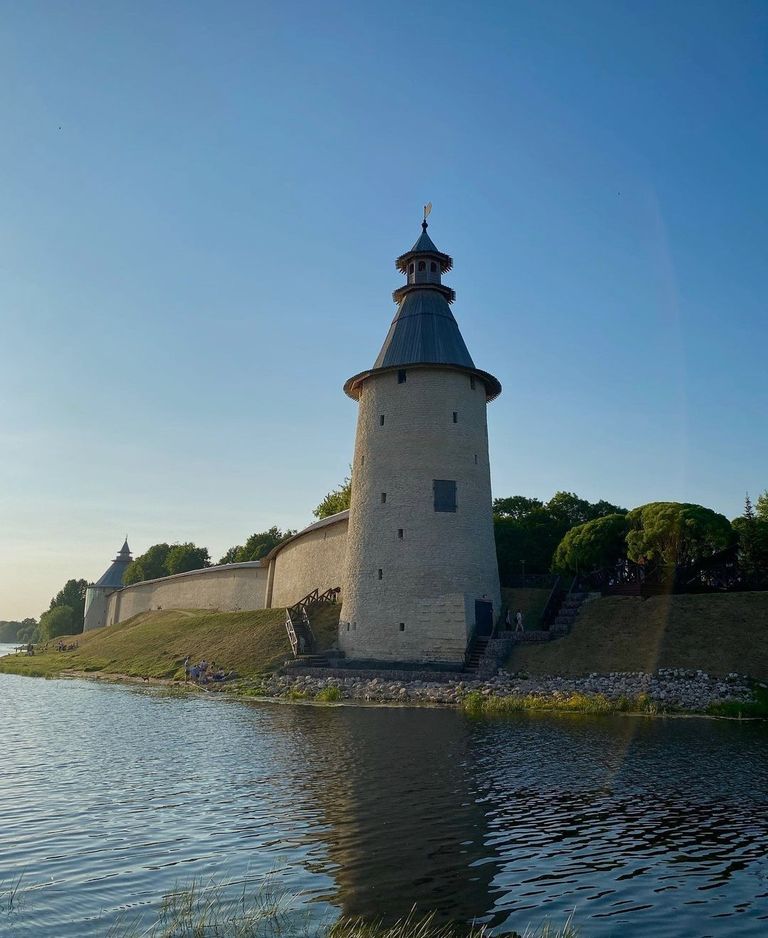
Pskov, la destinazione turistica più sottovalutata della Russia Ancor più di Mosca, questa città situata a soli 20 chilometri dal confine estone ospita numerosi gioielli architettonici elencati come patrimonio mondiale dell'UNESCO.
Situata lontano dai confini di Estonia e Lettonia, Pskov è una città ancor più di Mosca: fu menzionata per la prima volta nella storia nel 903, più di un secolo prima dell'inizio dell'attuale capitale della Russia.
Pskov, Russia's most underrated tourist destination Even more than Moscow, this city located just 20 kilometers from the Estonian border is home to numerous architectural gems listed as UNESCO World Heritage Sites.
Located far from the borders of Estonia and Latvia, Pskov is even more of a city than Moscow: it was first mentioned in history in 903, more than a century before the current capital of Russia began.
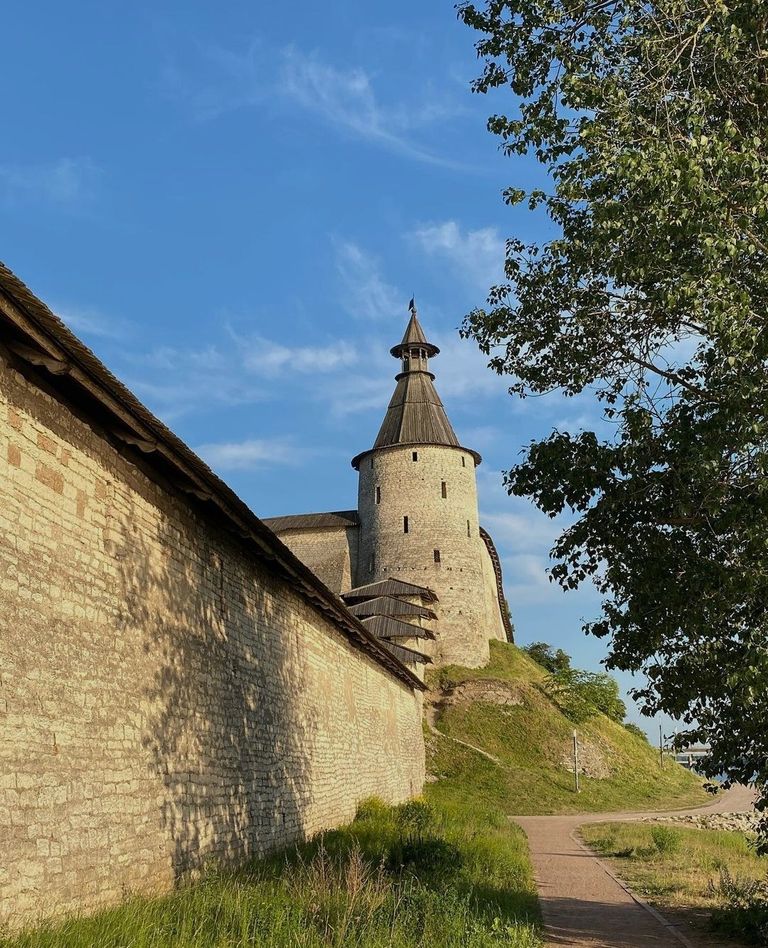
Per molto tempo è stato non solo un importante centro commerciale, ma anche un luogo importante per la difesa dell'antica Russia. E come avvenne altrove, Pskov perse la sua posizione di città potente all'inizio del XVIII secolo, con la fondazione di San Pietroburgo. Oggi Pskov è una città moderna, dove si possono fare piacevoli gite e deliziose cene negli splendidi ristoranti sul fiume; Alcuni furono ricavati dalla residenza originaria dei boiardi (membri dell'alta aristocrazia feudale) per fornire piatti culturali. Il Cremlino, a testimonianza del glorioso passato
Senza dubbio il primo luogo da visitare è il Cremlino, conosciuto come Pskov Krom, noto per essere il cuore più antico della città.
For a long time it was not only an important commercial center but also an important place for the defense of ancient Russia. And as happened elsewhere, Pskov lost its position as a powerful city in the early 18th century with the founding of St. Petersburg. Today Pskov is a modern city, where one can enjoy pleasant outings and delicious dinners in the splendid riverside restaurants; Some were carved out of the original residence of the boyars (members of the high feudal aristocracy) to provide cultural dishes. The Kremlin, a testament to the glorious past
Undoubtedly the first place to visit is the Kremlin, known as Pskov Krom, known to be the oldest heart of the city.
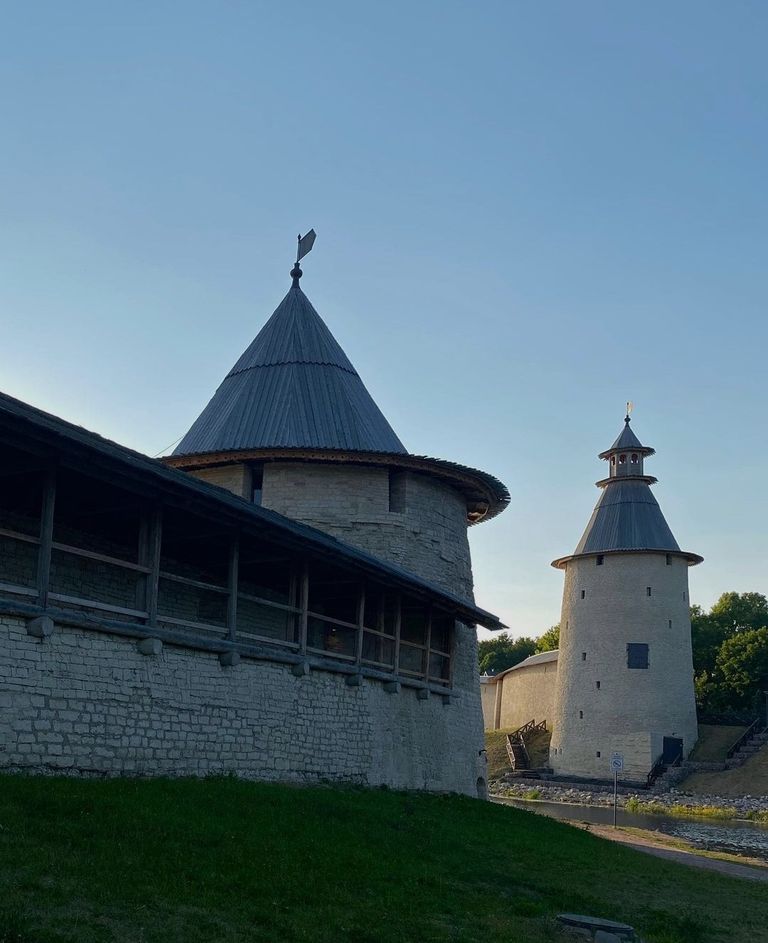
Costruito su una bellissima terra bagnata da due fiumi, Pskova e Velikaya, potrebbe essere l'ambientazione di una scena della serie TV "Il Trono di Spade"! Le mura della città, alte 8 metri e profonde 6, possono essere esplorate a piedi e ci si può fermare lì per godere della vista mozzafiato sul fiume. All'interno del Cremlino potrete visitare le rovine dei tempi antichi e riposarvi in un piacevole ristorante. Nel XIV secolo Pskov era uno degli stati indipendenti dell'Antica Russia, dove esisteva un popolare luogo d'incontro, conosciuto in russo come "veche" (veche). Uno degli edifici più famosi del Cremlino è la Cattedrale della Trinità del XVII secolo, che ospita una delle icone più lunghe e più grandi di tutta la Russia. Un gioiello del popolo.
A Pskov si incontrano chiese antiche e resti del passato ad ogni angolo di strada; e i luoghi di interesse sono così tanti che è impossibile visitarli tutti in una volta.
Built on beautiful land washed by two rivers, Pskova and Velikaya, it could be the setting for a scene from the TV series "Game of Thrones"! The city walls, 8 meters high and 6 meters deep, can be explored on foot and you can stop there to enjoy the breathtaking view of the river. Inside the Kremlin you can visit the ruins of ancient times and rest in a pleasant restaurant. In the 14th century Pskov was one of the independent states of Ancient Russia, where there was a popular meeting place, known in Russian as "veche" (old woman). One of the most famous buildings in the Kremlin is the 17th-century Trinity Cathedral, which houses one of the longest and largest icons in all of Russia. A jewel of the people.
In Pskov one encounters ancient churches and remnants of the past at every street corner; and there are so many places of interest that it is impossible to visit them all at once.
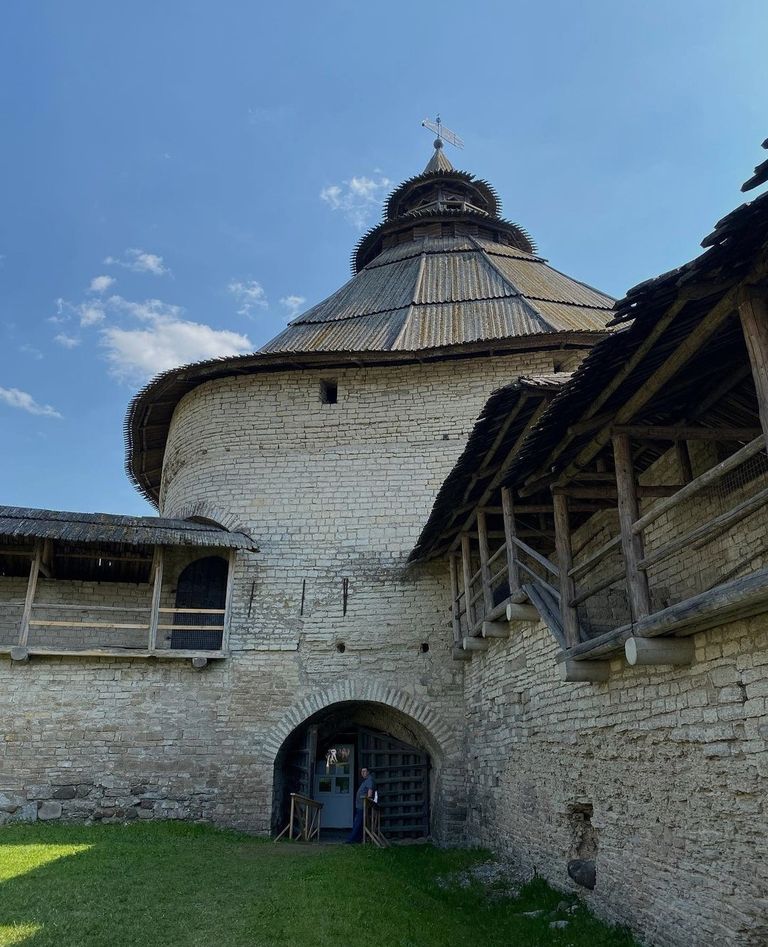
Dieci cattedrali, monasteri e monumenti architettonici della città sono stati dichiarati Patrimonio dell'Umanità dall'UNESCO. Tra questi spicca l'antico edificio del monastero Spaso-Mirozhskij, che risale al XII secolo. Tra i luoghi da visitare c'è la Chiesa dell'Arcangelo Michele con il suo campanile risalente al XIV secolo e la Chiesa di Saint-Michel. Basilio il Grande in montagna, iniziata nel XV secolo A ovest di Pskov si trova la città e la fortezza di Izborsk. Nel XIII secolo Izborsk resistette a numerosi attacchi di cavalieri armati di spada (un ordine di monaci militari tedeschi fondato nel 1202 da Alberto di Riga, conosciuto in russo come "Livonskij orden", ndr).
Ten cathedrals, monasteries and architectural monuments in the city have been declared UNESCO World Heritage Sites. Prominent among them is the ancient building of the Spaso-Mirozhsky Monastery, which dates back to the 12th century. Places to visit include the Church of Archangel Michael with its bell tower dating from the 14th century and the Church of Saint-Michel. Basil the Great in the Mountains, begun in the 15th century West of Pskov is the town and fortress of Izborsk. In the 13th century Izborsk withstood numerous attacks by knights armed with swords (an order of German military monks founded in 1202 by Albert of Riga, known in Russian as the "Livonskij orden," ed.)

. La cosa più interessante è che la zona è considerata sacra; Non è un caso che i cristiani ortodossi credano che le sorgenti che sgorgano dalle montagne vicino alle mura della fortezza siano sacre e vi si rechino per attingere acqua. Da vedere anche l'enorme monumento dedicato ad Alexander Nevsky e alla battaglia sul ghiaccio. , avvenuto nel. Quell'anno, il principe Alexander Nevsky sconfisse una serie di soldati con le spade e molti soldati nemici morirono sul ghiaccio. Nel film"Alexander Nevsky", lo storico sovietico Sergei Eisenstein ha cercato di ricreare questa battaglia, apparentemente utilizzando delle tecniche. invece del vero gelato. Le colline di Pushkin, la culla della letteratura russa A quasi 150 chilometri da Pskov, le spettacolari colline di Pushkin (Pushkinskie Gory), dove visse il famoso poeta, sono aperte ai turisti. Qui, una vecchia casa dorata è ambientata nella bucolica campagna della Russia rurale. Il complesso comprende tre tenute rurali legate alla vita del poeta: Mikhajlovskoye usadba, Trigorskoye e Petrovskoye, nonché il monastero Svyatogorsky, dove fu sepolto il poeta.
Most interestingly, the area is considered sacred; It is no accident that Orthodox Christians believe that the springs that flow from the mountains near the fortress walls are sacred and go there to draw water. Also worth seeing is the huge monument dedicated to Alexander Nevsky and the Battle on the Ice. , which took place in the. That year, Prince Alexander Nevsky defeated a number of soldiers with swords and many enemy soldiers died on the ice. In the film "Alexander Nevsky," Soviet historian Sergei Eisenstein tried to recreate this battle, apparently using techniques. instead of real ice cream. Pushkin Hills, the cradle of Russian literature Nearly 150 kilometers from Pskov, the spectacular Pushkin Hills (Pushkinskie Gory), where the famous poet lived, are open to tourists. Here, a gilded old house is set in the bucolic countryside of rural Russia. The complex includes three rural estates related to the poet's life-Mikhajlovskoye usadba, Trigorskoye and Petrovskoye-as well as the Svyatogorsky Monastery, where the poet was buried.
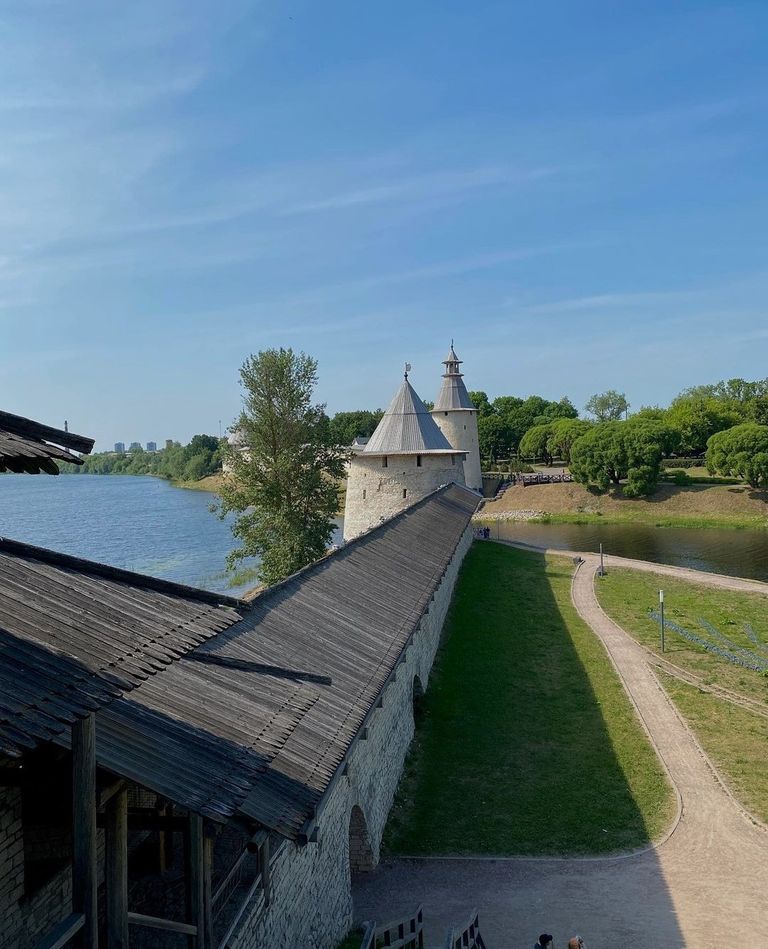
Il luogo preferito dai residenti e dagli escursionisti è la "banchina d'oro". L'area si estende lungo il fiume, sulle rive del quale è costruito un grande albergo. I palazzi sono costruiti nello stile architettonico del XIX secolo. Le facciate degli splendidi edifici sono decorate con uno spirito molto antico. Vengono utilizzate piante grasse, aiuole, comode sedie e lampade da terra. Passeggiando per le strade affollate, i passanti possono ammirare gli splendidi edifici del Cremlino di Pskov. Il secondo giorno
A favorite spot for residents and hikers is the "Golden Quay." The area stretches along the river, on the banks of which a large hotel is built. The buildings are built in the architectural style of the 19th century. The facades of the beautiful buildings are decorated with a very old spirit. Succulent plants, flower beds, comfortable chairs and floor lamps are used. Walking through the busy streets, passersby can admire the splendid buildings of the Pskov Kremlin. On the second day
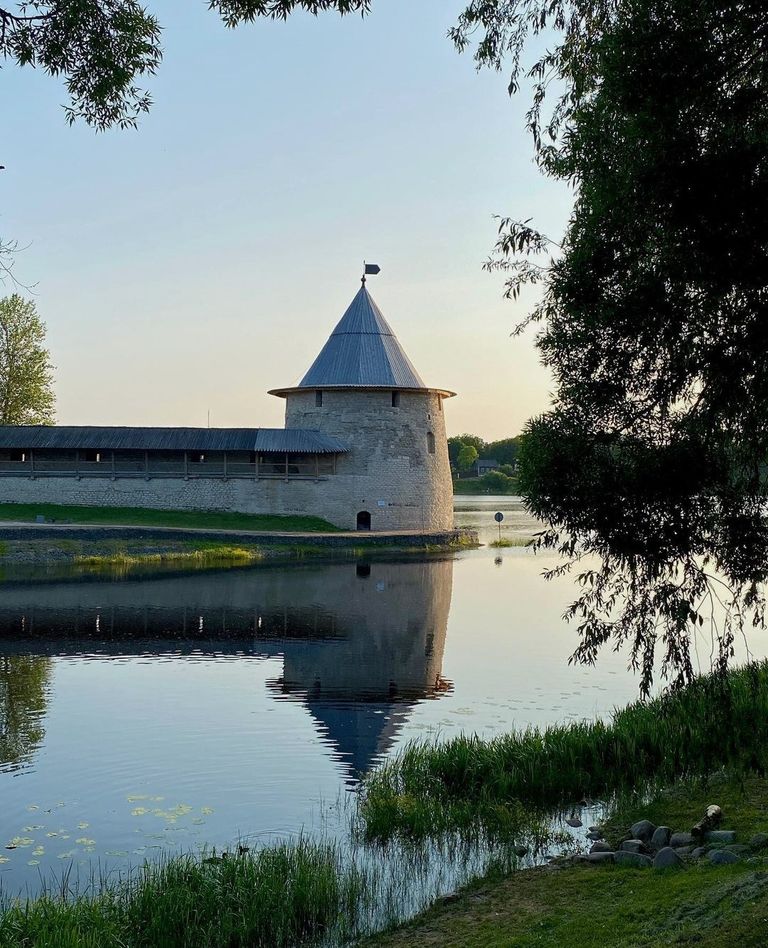
Una gita nelle antiche città vicine ti aiuterà a conoscere meglio la regione di Pskov. Una visita alla città antica lascerà molte cose interessanti nella memoria dei turisti. Il secondo giorno del tour culturale potrete visitare anche alcuni musei e istituzioni interessanti. Nell'edificio di una scuola per bambini è stato aperto un interessante museo dedicato al film horror "Two Leaders". L'autore di questo interessante lavoro è lo scrittore sovietico Veniamin Kaverin, nato e cresciuto a Pskov. È il suo paese a diventare l'esempio di Ensk descritto nel libro.
A trip to nearby ancient cities will help you learn more about the Pskov region. A visit to the ancient city will leave many interesting things in the memory of tourists. On the second day of the cultural tour you can also visit some interesting museums and institutions. An interesting museum dedicated to the horror film "Two Leaders" has been opened in the building of a children's school. The author of this interesting work is Soviet writer Veniamin Kaverin, who was born and raised in Pskov. It is his village that became the example of Ensk described in the book.
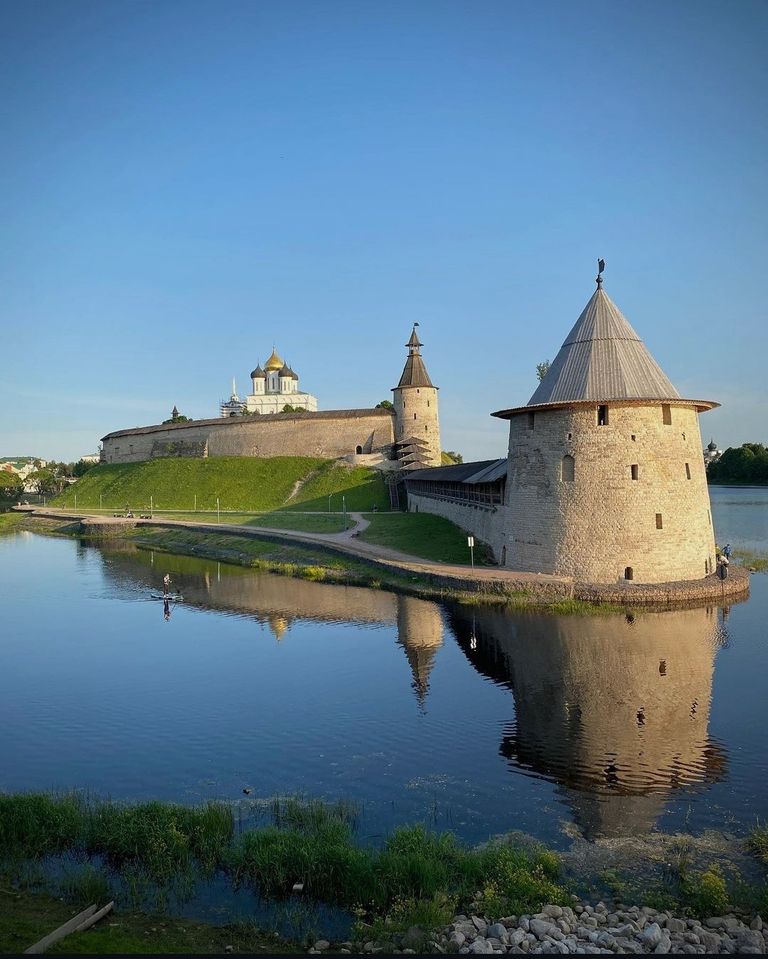
Le mostre del museo sono le preferite di coloro che conoscono e amano questa famosa opera. Questi spettacoli creano amicizie uniche, ispirate dall'amore per i viaggi. . Kaverin, altri edifici sono riservati all'esposizione degli oggetti luminosi che si riflettono sulle pagine del libro. I visitatori del museo potranno vedere fotografie storiche, manoscritti, prime edizioni del giornale, impressioni dell'autore, modelli di navi, pale di aeroplani, bussole, globi, mappe e altro ancora. È costituito dall'albero di una nave con timone e vele. La guida ti parlerà di coloro che sono serviti da prototipi per i principali lettori dell'opera, nonché della precedente rivoluzione nell'Artico. Orari di apertura: dalle 11:00 alle 17:00. Il sabato è un giorno libero. Nel mezzo della foresta, a 40 chilometri di distanza, si trova un allevamento di api e allo stesso tempo un museo aereo:
Museum exhibitions are a favorite of those who know and love this famous work. These shows create unique friendships inspired by a love of travel. . Kaverin, other buildings are reserved for the display of the luminous objects reflected in the pages of the book. Visitors to the museum will be able to see historical photographs, manuscripts, first editions of the journal, author's impressions, ship models, airplane blades, compasses, globes, maps and more. It consists of a ship's mast with rudder and sails. The guide will tell you about those who served as prototypes for the main readers of the work, as well as the previous revolution in the Arctic. Opening hours: 11 a.m. to 5 p.m. Saturday is a free day. In the middle of the forest, 40 kilometers away, is a bee farm and at the same time an air museum:

la fattoria del miele. Questa bellissima fattoria attira i visitatori con mostre sulla vita dei contadini del XIX e XX secolo, nonché con l'opportunità di conoscere la tradizione dell'apicoltura. La tenuta ha un apiario funzionante e alcune vecchie capanne di legno. Interessante la raccolta di materiali da costruzione, utensili, strumenti artistici e insoliti alveari. Nell'area ben curata dell'azienda ci sono stanze dove i turistipossono gustare una varietà di deliziosi prodotti a base di miele e degustare diversi vini. Il Museo Agricolo vi accoglie dalle 9:00 alle 10:00. Le visite alla fattoria sono gratuite. Per i turisti curiosi vengono offerte visite guidate a pagamento e lezioni speciali di apicoltura. I turisti possono fare un giro attraverso il grande cielo, riflettendo sulle stelle, sui pianeti e su altri oggetti nel cielo del pianeta. Il centro scientifico ed educativo si trova in uno dei monumenti architettonici del XIX secolo, nell'originaria chiesa della Natività della Vergine. L'edificio attuale ricorda più o meno la sagoma del tempio, perché è stato ampiamente ristrutturato e dal 1974 fungeva da terrazza. La facciata dell'edificio è ornata da un bel quadrato con quattro colonne e frontone. L'edificio ha un coronamento e una piccola cupola con torre. Telescopi speciali, proiettori e utensili manuali vengono utilizzati per creare effetti ottici.
the honey farm. This beautiful farm attracts visitors with exhibits on the life of 19th- and 20th-century farmers, as well as opportunities to learn about the tradition of beekeeping. The estate has a working apiary and some old wooden huts. The collection of building materials, tools, artistic instruments and unusual beehives is interesting. There are rooms in the well-maintained area of the farm where tourists can enjoy a variety of delicious honey products and taste different wines. The Agricultural Museum welcomes you from 9 a.m. to 10 a.m. Visits to the farm are free of charge. For curious tourists, guided tours and special beekeeping classes are offered for a fee. Tourists can take a tour through the big sky, reflecting on the stars, planets and other objects in the planet's sky. The science and education center is located in one of the 19th-century architectural monuments, in the original Church of the Nativity of the Virgin. The present building more or less resembles the silhouette of the temple, because it has been extensively renovated and has served as a terrace since 1974. The facade of the building is adorned with a beautiful square with four columns and pediment. The building has a crowning and a small dome with tower. Special telescopes, projectors and hand tools are used to create optical effects.

Nella cupola viene ricreata l'illusione del cielo stellato, mostrando la nascita delle galassie e delle costellazioni. La sala principale può ospitare 60 persone. Ai visitatori di tutte le età vengono offerte lezioni di scienze e vari programmi educativi. Dal lunedì al giovedì le porte del planetario sono aperte dalle 9:00 alle 6:00. Venerdì sentirai lo splendore dell'Universo dalle 9:00 alle 5:00. La domenica la sala delle stelle inizia a funzionare dalle ore 11:00 fino all'ultima sessione. Nel villaggio di Pogorelka esiste un piccolo gruppo sociale chiamato "Il cortile degli uccelli". Mangiatoie e abbeveratoi sono utili negli edifici ben mantenuti e puliti. Nel giardino zoologico si creano condizioni favorevoli per l'habitat di vari rappresentanti di animali. Qui potrete vedere, toccare qualche cibo: galline, struzzi, oche, anatre, fagiani, pavoni, tacchini, scoiattoli, cicogne, volpi, cigni, maiali, capre, conigli, pecore e tanti altri animali un'altra barzelletta. Nell'ampio territorio del vivaio c'è una piscina
The illusion of the starry sky is recreated in the dome, showing the birth of galaxies and constellations. The main hall can accommodate 60 people. Science lessons and various educational programs are offered to visitors of all ages. Monday through Thursday the planetarium doors are open from 9:00 to 6:00. On Friday you will feel the splendor of the Universe from 9:00 to 5:00. On Sundays the star room starts running from 11:00 until the last session. In the village of Pogorelka there is a small social group called "The Bird Yard." Feeders and watering troughs are useful in well-maintained and clean buildings. Favorable conditions for the habitat of various animal representatives are created in the zoo. Here you can see, touch some food: chickens, ostriches, geese, ducks, pheasants, peacocks, turkeys, squirrels, storks, foxes, swans, pigs, goats, rabbits, sheep and many other animals another joke. In the extensive nursery grounds there is a swimming pool
Telegram and Whatsapp